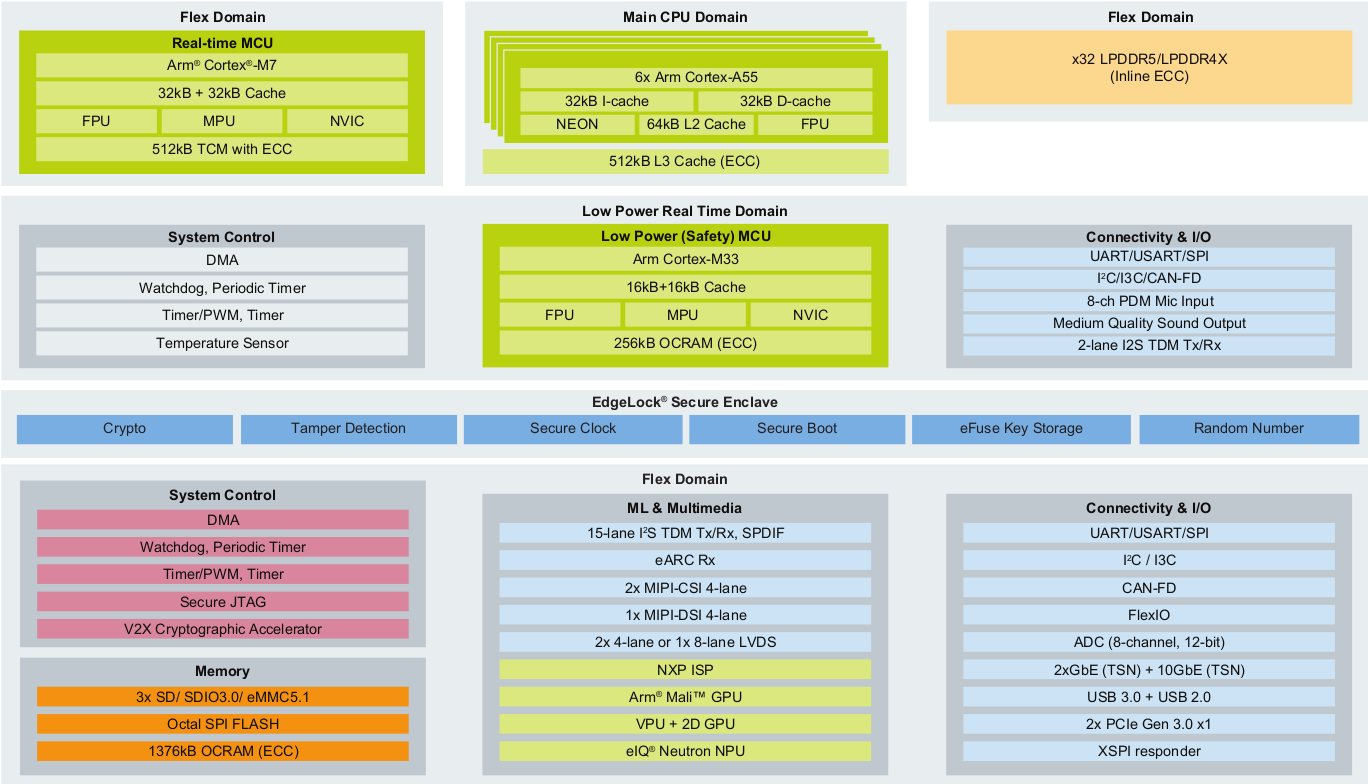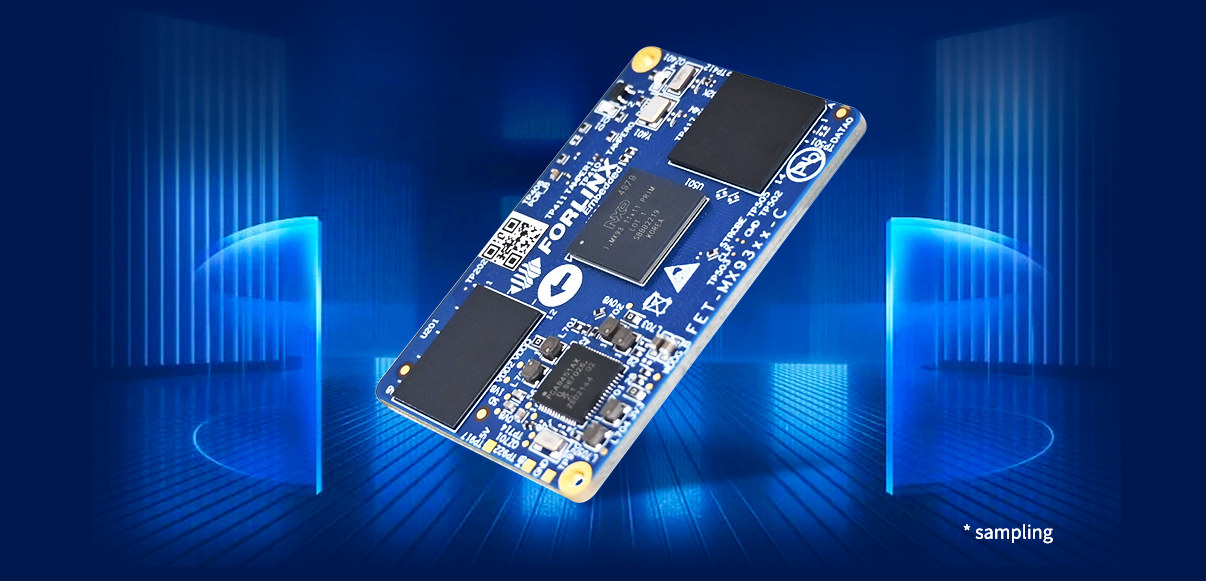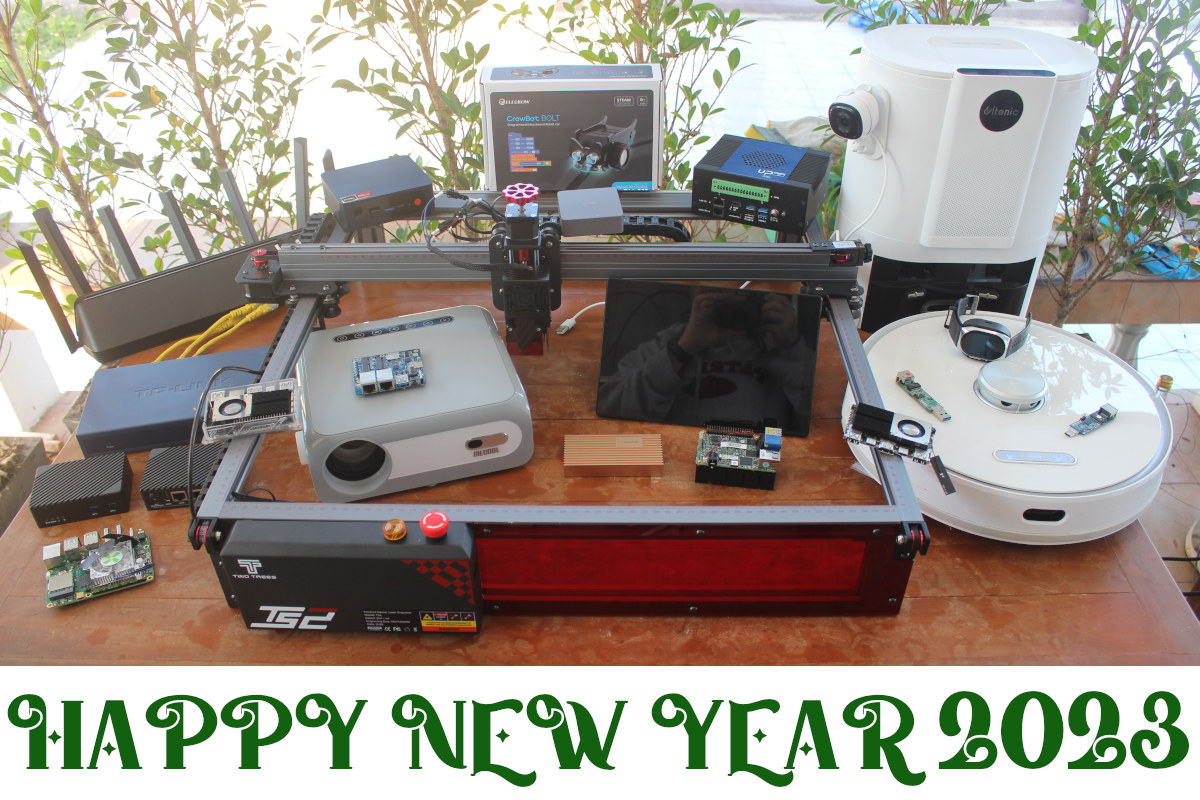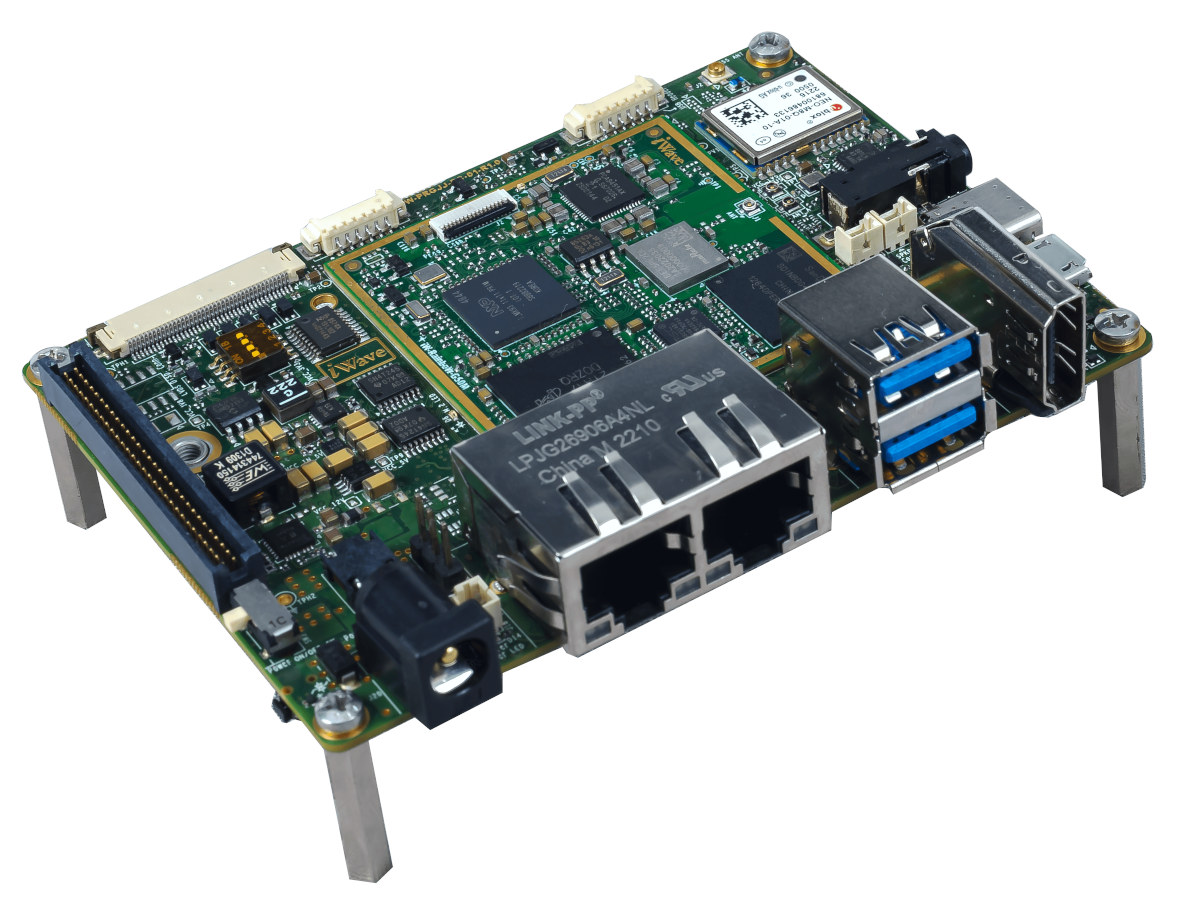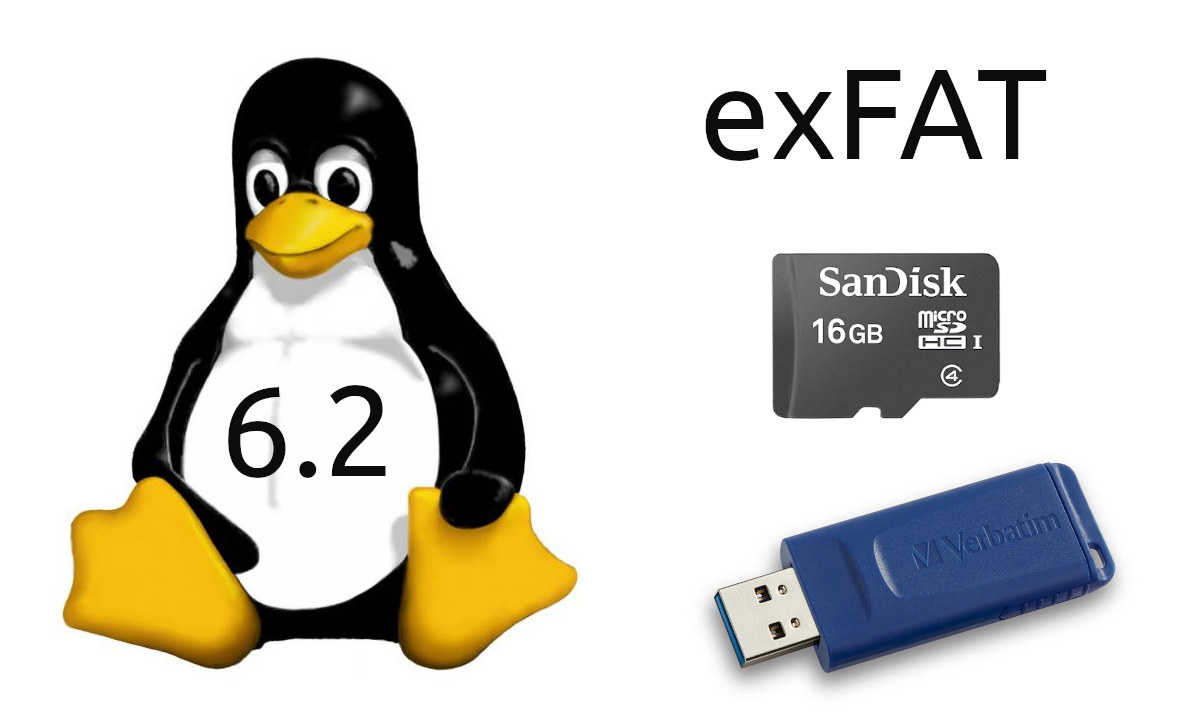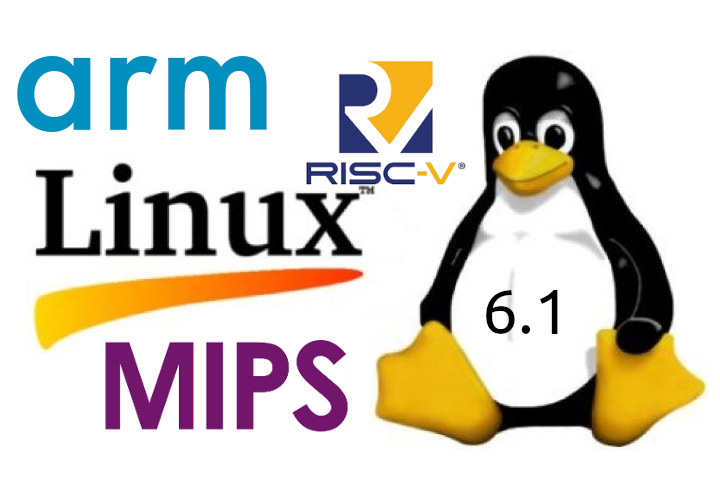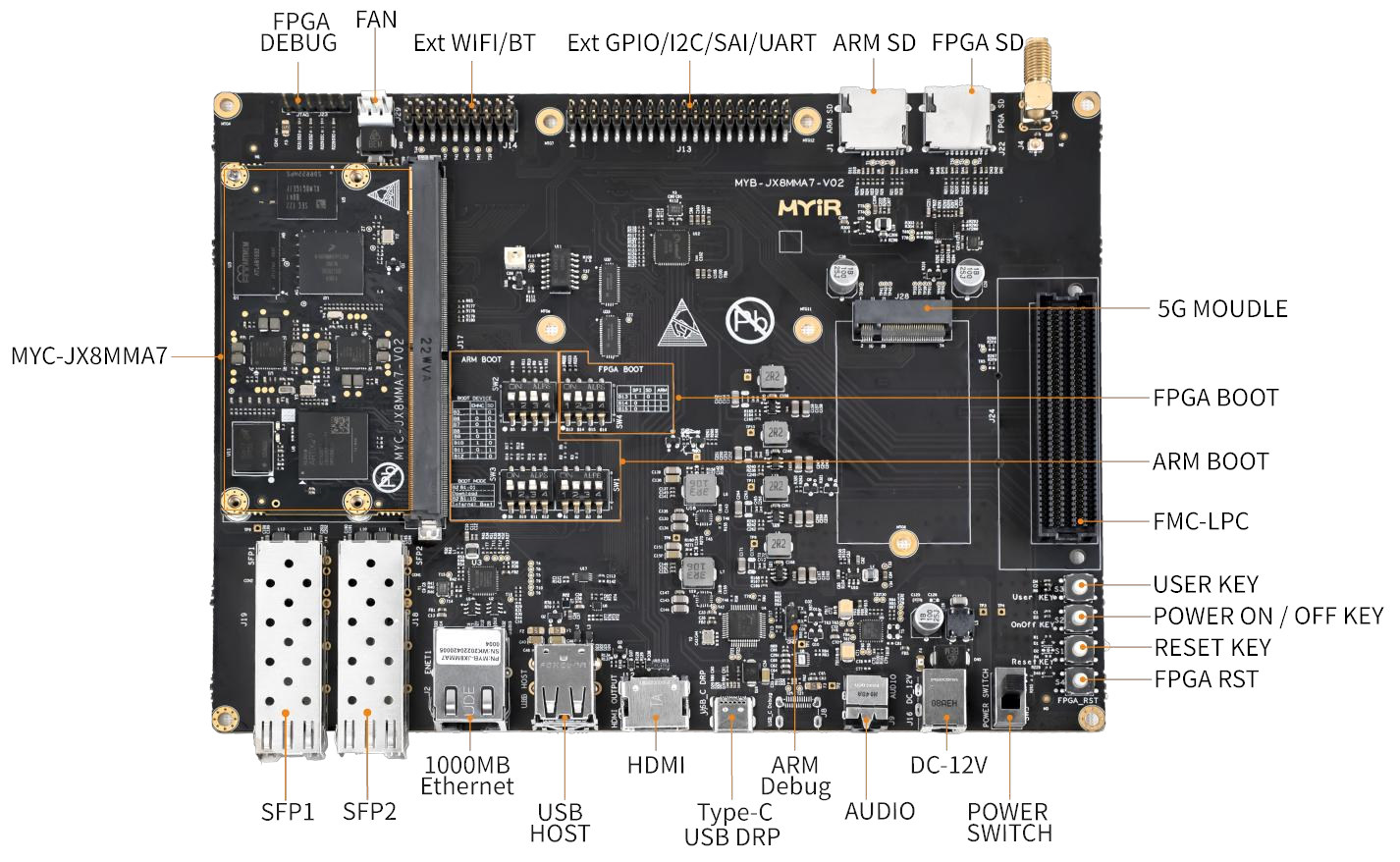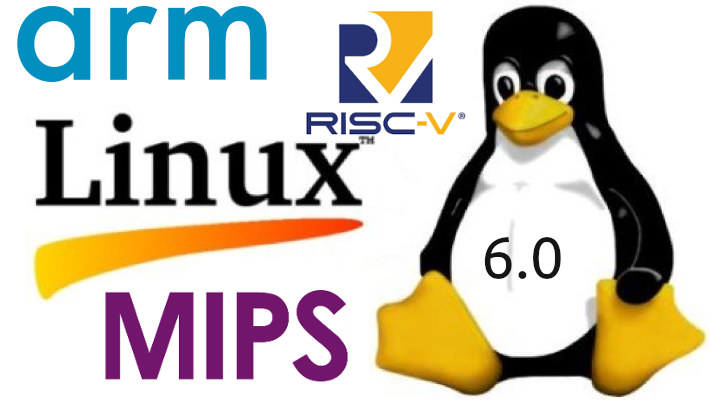NXP i.MX 95 is an upcoming Arm processor family for automotive, industrial, and IoT applications with up to six Cortex-A55 application cores, a Cortex-M33 safety core, a Cortex-M7 real-time core, and NXP eIQ Neutron Neural Network Accelerator (NPU). We’re just only starting to see NXP i.MX 93 modules from companies like iWave Systems and Forlinx, but NXP is already working on its second i.MX 9 processor family with the i.MX 95 application processor family equipped with a higher number of Cortex-A55 cores, an Arm Mali 3D GPU, NXP SafeAssure functional safety, 10GbE, support for TSN, and the company’s eIQ Neutron Neural Processing Unit (NPU) to enable machine learning applications. NXP i.MX 95 specifications: CPU Up to 6x Arm Cortex-A55 cores with 32KB I-cache, 32KB D-cache, 64KB L2 cache, 512KB L3 cache with ECC 1x Arm Corex-M7 real-time core with 32KB I-cache, 32KB D-cache, 512KB TCM with ECC 1x Arm Cortex-M33 […]
Forlinx FET-MX9352-C – An NXP i.MX 9352 system-on-module for industrial AIoT applications
Forlinx FET-MX9352-C is a system-on-module based on NXP i.MX 9352 dual Cortex-A55 processor with Cortex-M33 real-time core and a 0.5 TOPS AI accelerator that can be used for industrial control, IoT gateways, medical equipment, and various applications requiring machine learning acceleration. The FET-MX9352-C follows last week’s announcement of the iWave Systems iW-RainboW-G50M OSM module and SBC with a choice of NXP i.MX 93 processors. The Forlinx module comes with two board-to-board connectors instead of solderable pads and can be found in the OK-MX9352-C single board computer with dual GbE, various display and camera interfaces, RS485 and CAN Bus, etc… FET-MX9352-C i.MX 9352 system-on-module Specifications: SoC – NXP i.MX 9352 with 2x Arm Cortex-A55 cores @ up to 1.7GHz (commercial) or 1.5 GHz (industrial), Cortex-M33 real-time core @ 250 MHz, 0.5 TOPS Arm Ethos U65 microNPU System Memory – 1GB/2GB LPDDR4 RAM Storage – 8GB eMMC flash 2x high-density 100-pin board-to-board […]
Year 2022 in review – Top 10 posts and statistics
It’s the last day of the year and the time to look at some of the highlights of 2022, some traffic statistics from CNX Software website, and speculate on what 2023 may bring us. The semiconductors shortage continued in 2022, but things are looking brighter in 2023 with the full reopening of the world mixed with forecasts of difficult economic times that should keep the demand/supply equation in check. On the Arm processor front the biggest news of the year, at least in this corner of the Internet, was the launch of the Rockchip RK3588 octa-core Cortex-A76/A55 processor together with interesting single board computers that we’ll discuss below. Announced last year, the Amlogic A311D2 octa-core Cortex-A73/A53 was finally made available in a few SBC’s, and we finally got some news about the Amlogic S928X Cortex-A76/A55 SoC showcased in 8K TV boxes, but we have yet to see it in action. […]
Pico-ITX SBC features NXP i.MX 93 LGA system-on-module
iWave Sytems iW-RainboW-G50M is an NXP i.MX 93 OSM-L compliant LGA module with up to 2GB RAM, WiFi 5 and Bluetooth 5.2 module that is found in the company’s iW-RainboW-G50S Pico-ITX SBC designed for industrial applications. The NXP i.MX 93 single and dual-core Cortex-A55 processor with an Ethos U65 microNPU was announced in November 2021, but we had yet to see any hardware based on the new NXP i.MX 9 processor family. The iW-RainboW-G50M and iW-RainboW-G50S change that with a system-on-module and single board computer. iW-RainboW-G50M NXP i.MX 93 system-on-module Specifications: SoC (one or the other) NXP i.MX 9352 dual-core Cortex-A55 processor @ up to 1.7 GHz with Arm Cortex-M33 @ 250 MHz, 0.5 TOPS NPU NXP i.MX 9351 single-core Cortex-A55 processor @ up to 1.7 GHz with Arm Cortex-M33 @ 250 MHz, 0.5 TOPS NPU NXP i.MX 9332 dual-core Cortex-A55 processor @ up to 1.7 GHz Arm Cortex-M33 @ […]
Linux 6.2 exFAT update to improve performance when creating files and directories
The exFAT file system is about to get faster in Linux 6.2, at least when creating files and directories, with the performance boost especially noticeable on low-end processors. Microsoft released the exFAT specification and announced Linux support in August 2019, which was followed by a new exFAT implementation in Linux 5.7 (June 2020) from Samsung. But people are still working on improving exFAT Linux support, and Yuezhang Mo, an engineer at Sony, committed a patchset for Linux 6.2 that reduces repeated traversal of directory entries to boost the performance of exFAT: After traversing all directory entries, hint the empty directory entry no matter whether or not there are enough empty directory entries. After this commit, hint the empty directory entries like this: 1. Hint the deleted directory entries if enough; 2. Hint the deleted and unused directory entries which at the end of the cluster chain no matter whether enough […]
Linux 6.1 LTS release – Main changes, Arm, RISC-V and MIPS architectures
Linus Torvalds announced the release of Linux 6.1, likely to be an LTS kernel, last Sunday: So here we are, a week late, but last week was nice and slow, and I’m much happier about the state of 6.1 than I was a couple of weeks ago when things didn’t seem to be slowing down. Of course, that means that now we have the merge window from hell, just before the holidays, with me having some pre-holiday travel coming up too. So while delaying things for a week was the right thing to do, it does make the timing for the 6.2 merge window awkward. That said, I’m happy to report that people seem to have taken that to heart, and I already have two dozen pull requests pending for tomorrow in my inbox. And hopefully I’ll get another batch overnight, so that I can try to really get as […]
System-on-module combines NXP i.MX 8M Mini Arm CPU and Xilinx Artix-7 FPGA
MYIR Tech has launched the MYC-JX8MMA7 system-on-module combining an NXP i.MX 8M Mini quad-core Arm Cortex-A53 processor with an AMD Xilinx XC7A25T Artix-7 FPGA. The 82 x 45mm CPU module comes with 2GB LPDDR4, 8GB eMMC flash, and 32MB QSPI Flash for the Arm processor and 256MB DDR3 and 32MB QSPI Flash for FPGA. It exposes I/Os through an MXM 3.0 edge connector and can operate in the industrial temperature range (-40 to 85°C). MYC-JX8MMA7 CPU module specifications: SoC – NXP i.MX 8M Mini with quad-core Cortex-A53 processor @ up to 1.6 (industrial) or 1.8 GHz, Cortex-M4F real-time core @ 400 MHz, Vivante GC320 and Vivante GCNanoUltra 3D/2D GPUs, 1080p60 H.265, H.264, VP8, VP9 video decoder, 1080p60 H.264 & VP8 video encoder FPGA – AMD Xilinx Artix-7 XC7A25T-2CSG325 with 23,360 logic cells, 3x GTP System Memory and Storage SoC – 2GB LPDDR4, 8GB eMMC flash, and 32MB QSPI Flash FPGA […]
Linux 6.0 release – Main changes, Arm, RISC-V, and MIPS architectures
Linux 6.0 has just been released by Linus Torvalds: So, as is hopefully clear to everybody, the major version number change is more about me running out of fingers and toes than it is about any big fundamental changes. But of course there’s a lot of various changes in 6.0 – we’ve got over 15k non-merge commits in there in total, after all, and as such 6.0 is one of the bigger releases at least in numbers of commits in a while. The shortlog of changes below is only the last week since 6.0-rc7. A little bit of everything, although the diffstat is dominated by drm (mostly amd new chip support) and networking drivers. And this obviously means that tomorrow I’ll open the merge window for 6.1. Which – unlike 6.0 – has a number of fairly core new things lined up. But for now, please do give this most […]


